
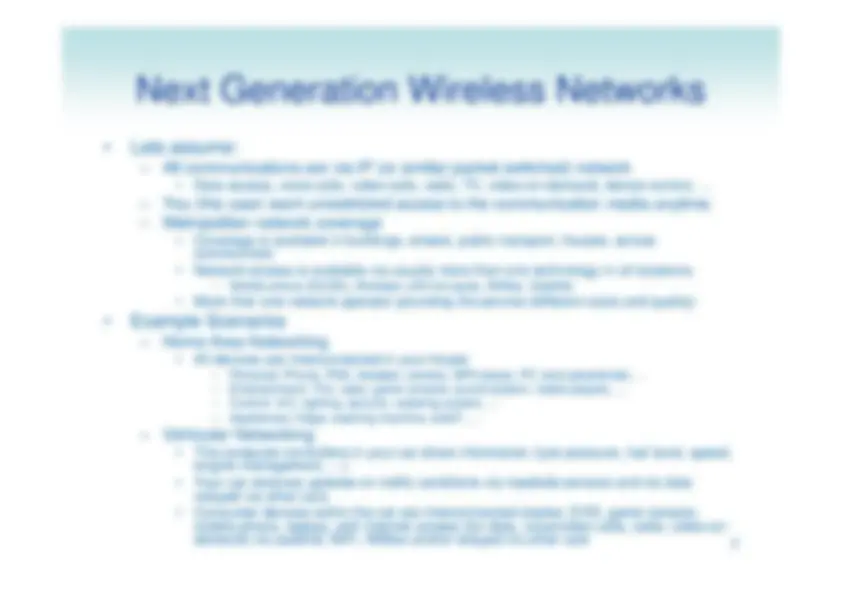
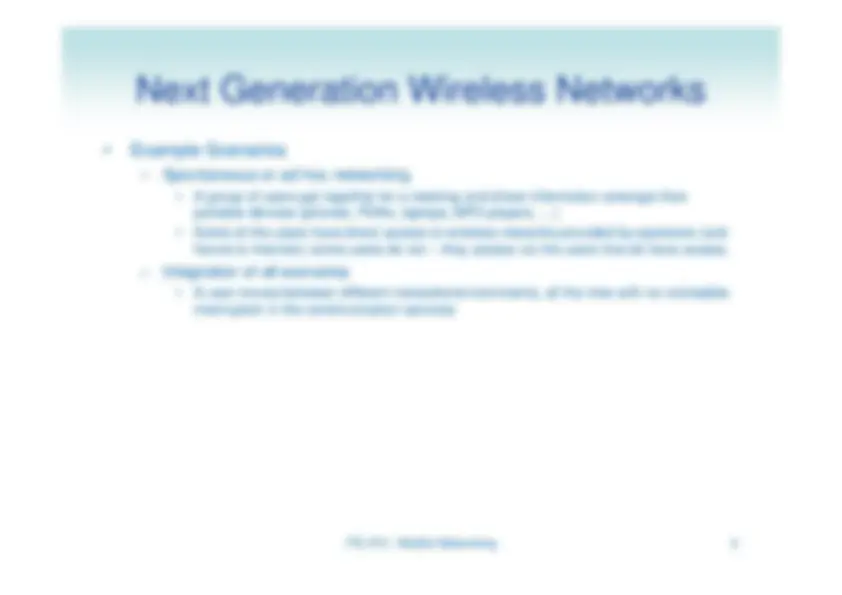
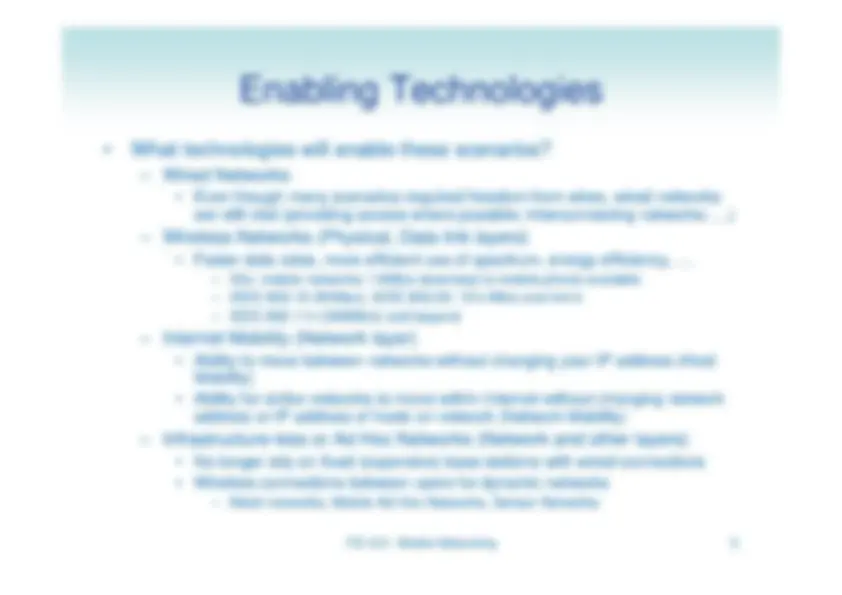

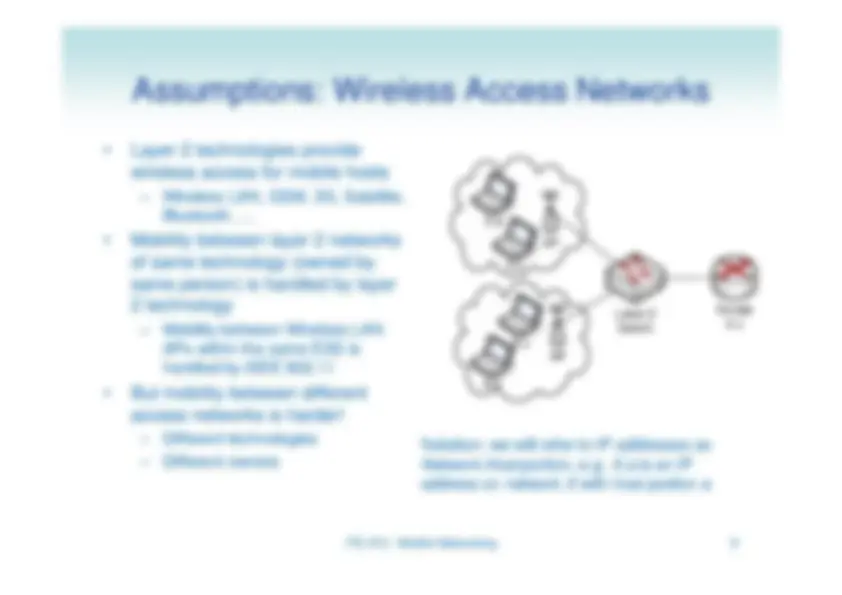
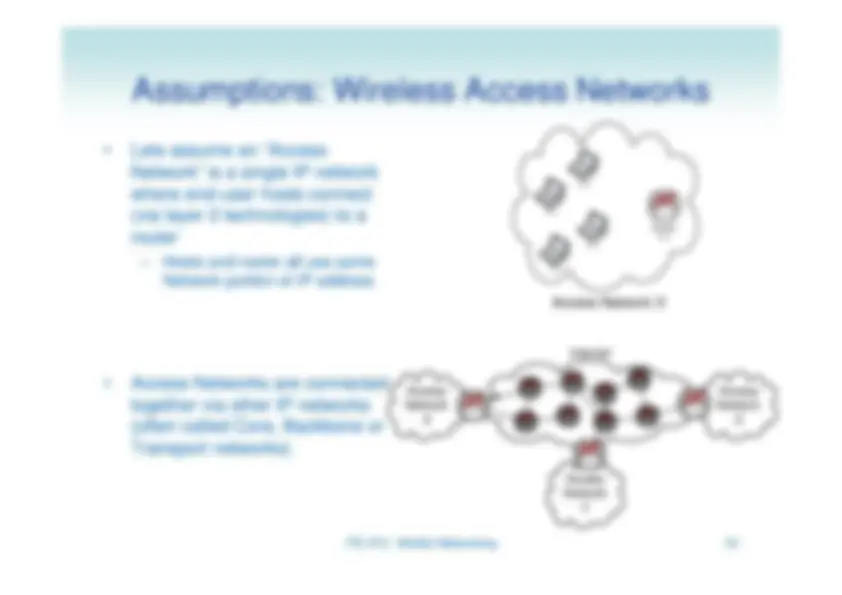
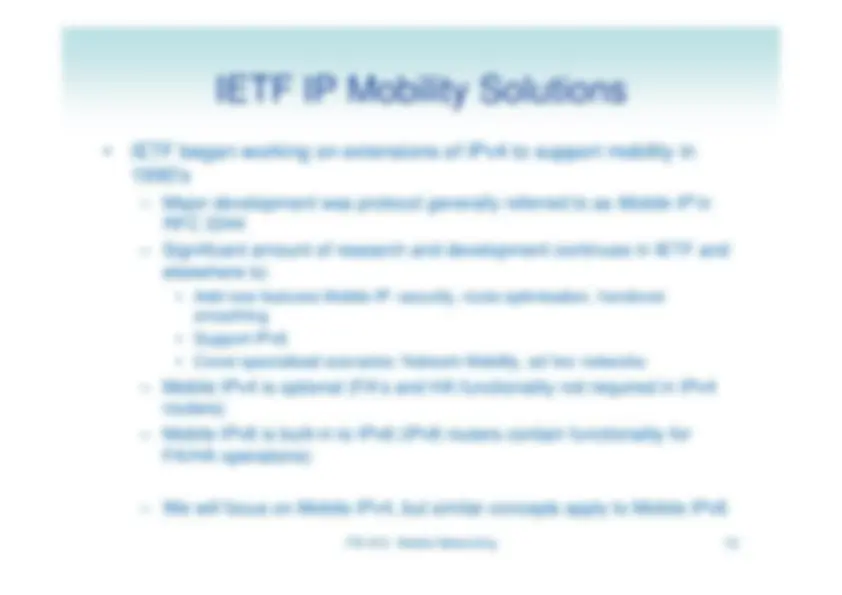
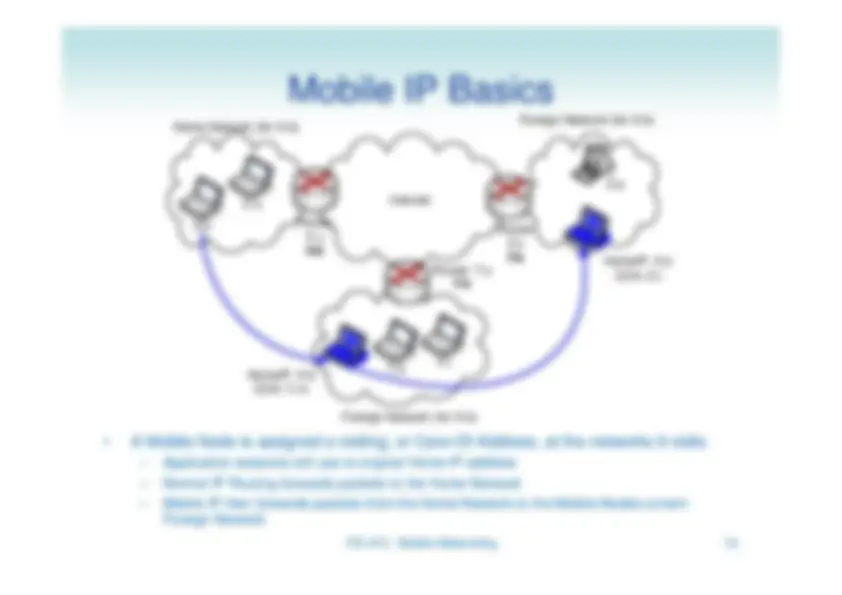
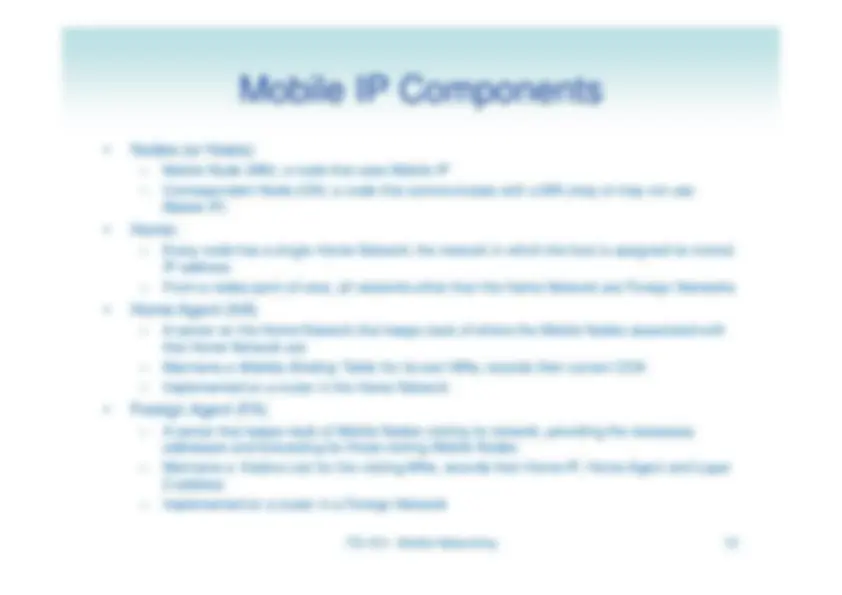
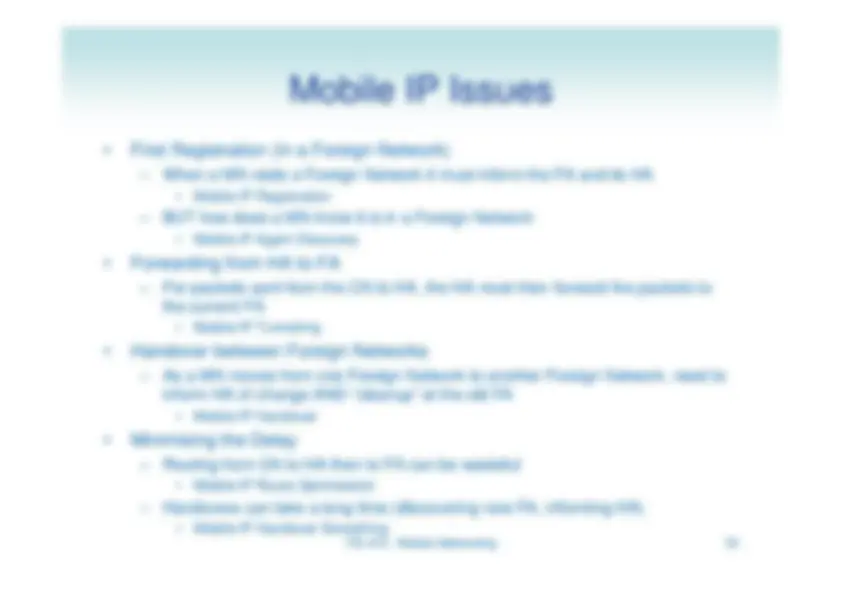
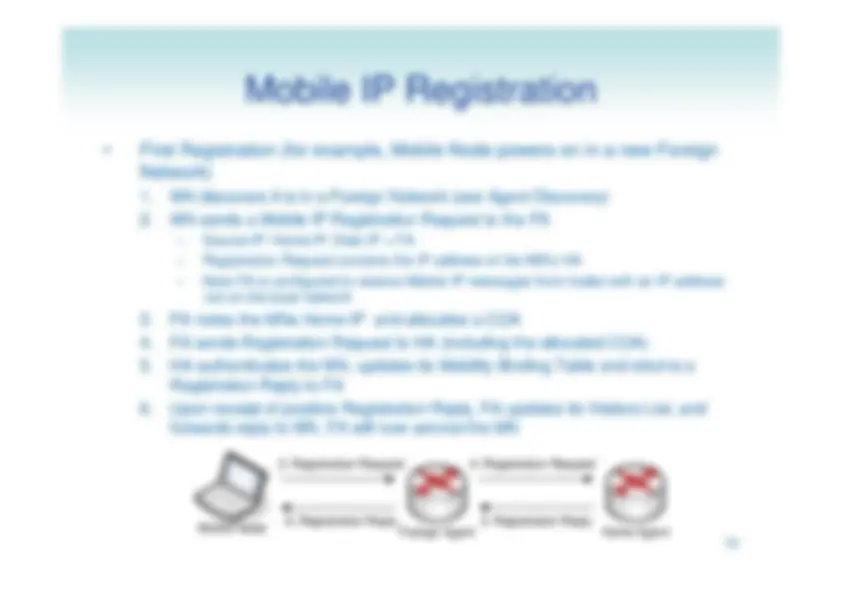
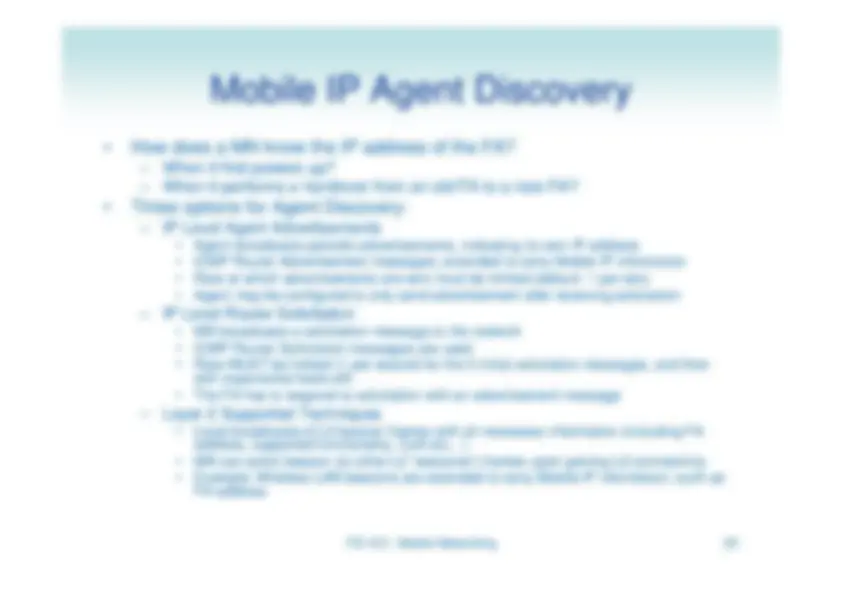
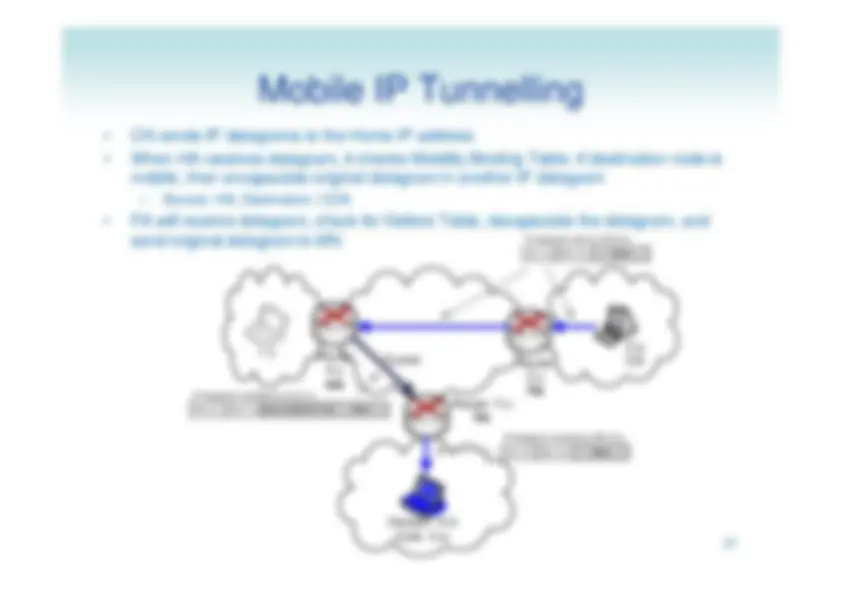
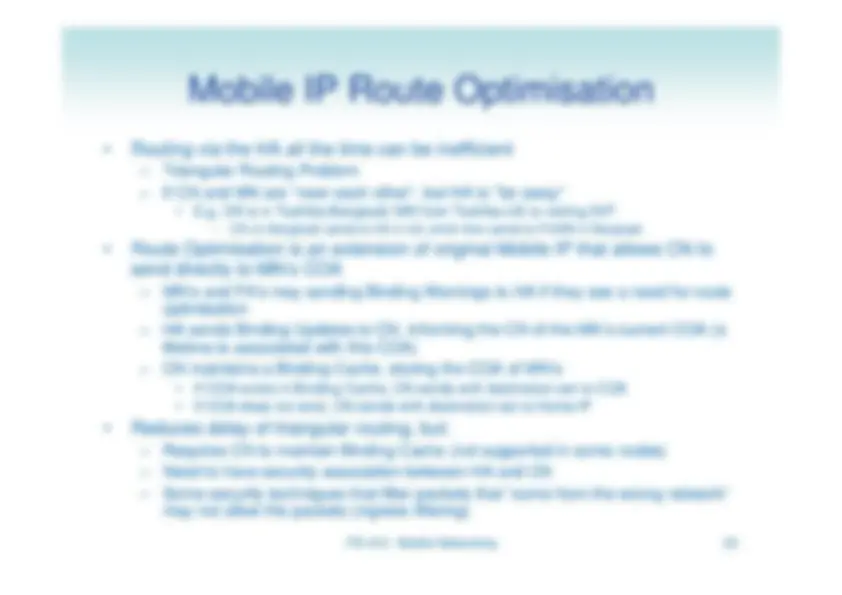
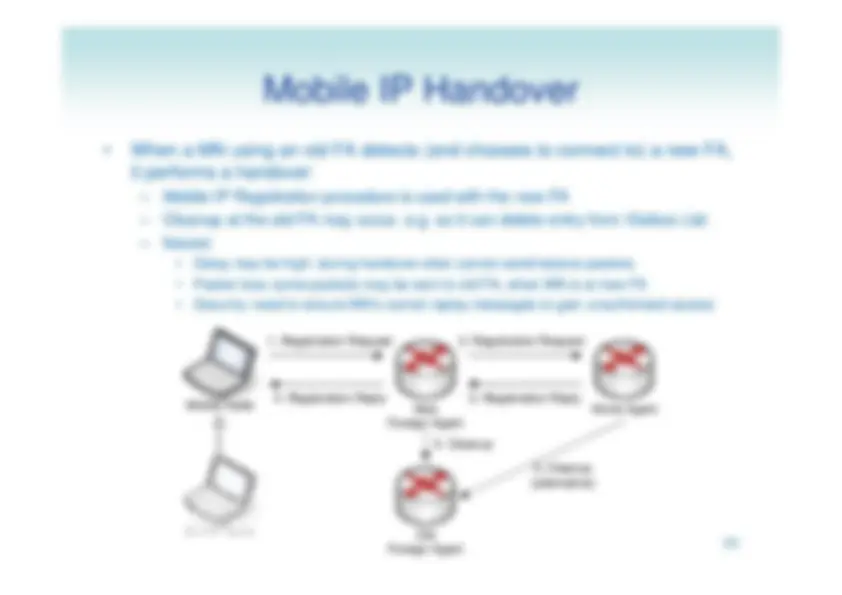
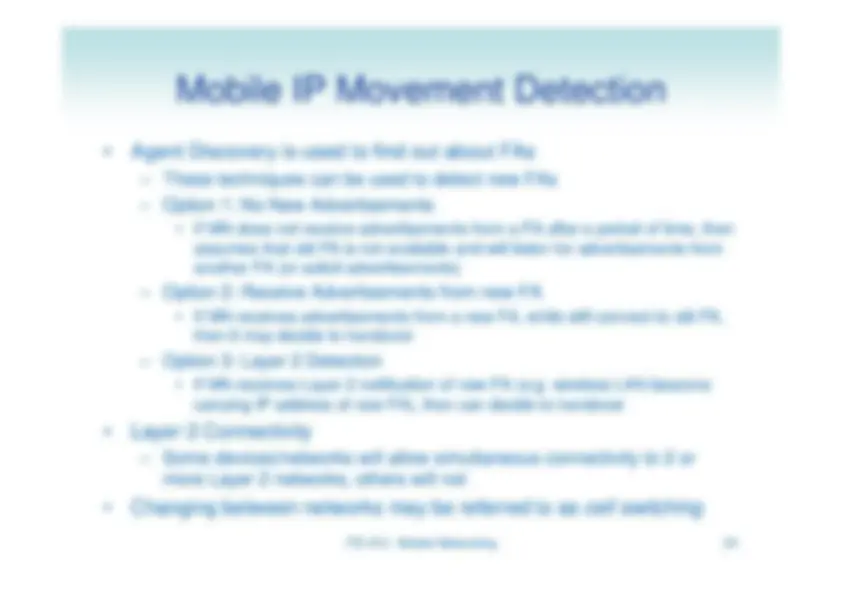
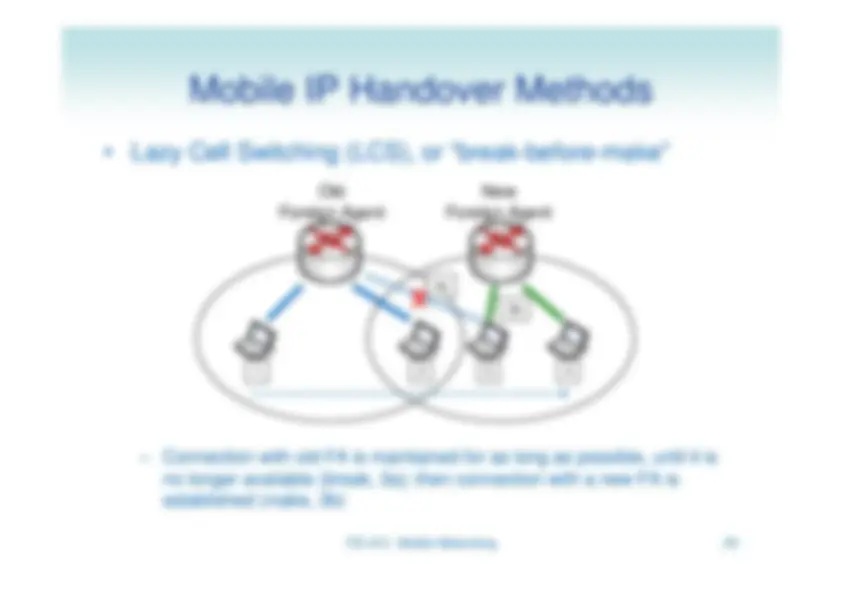
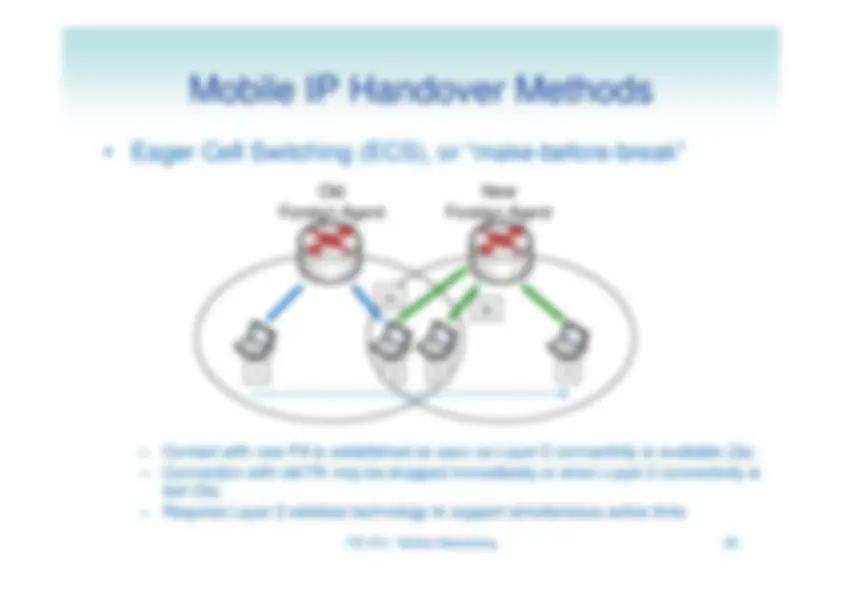
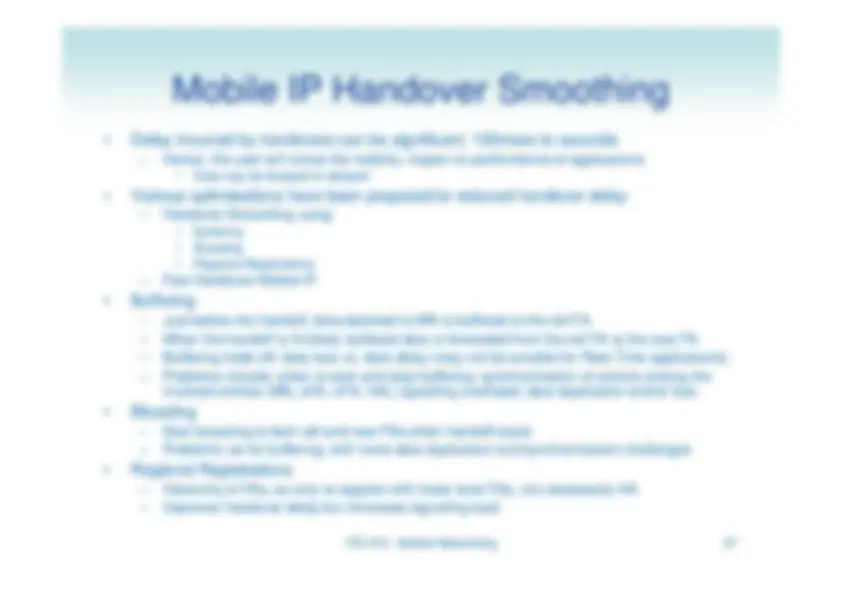
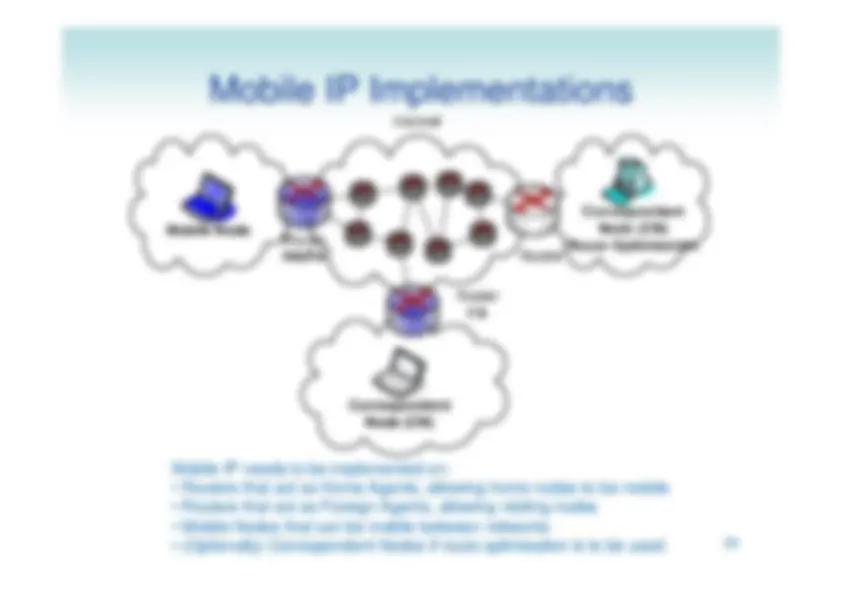
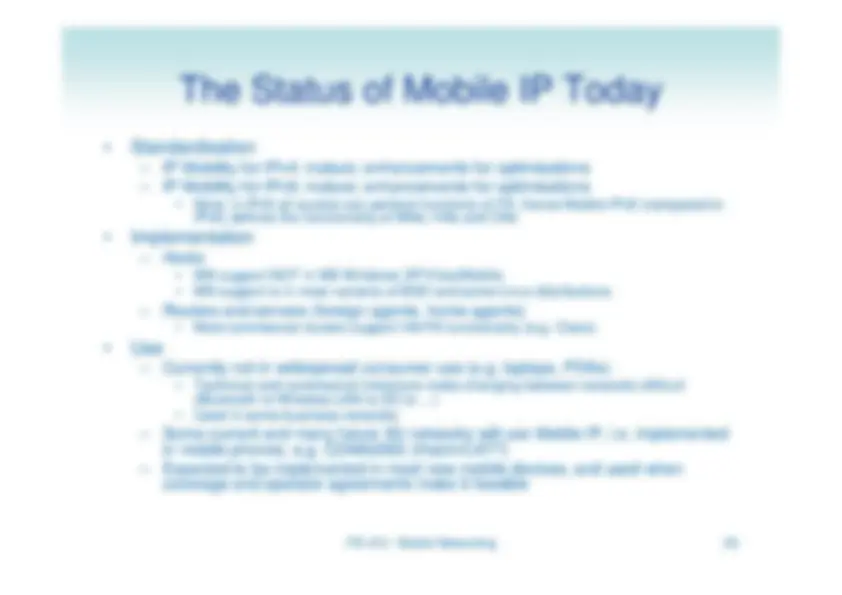
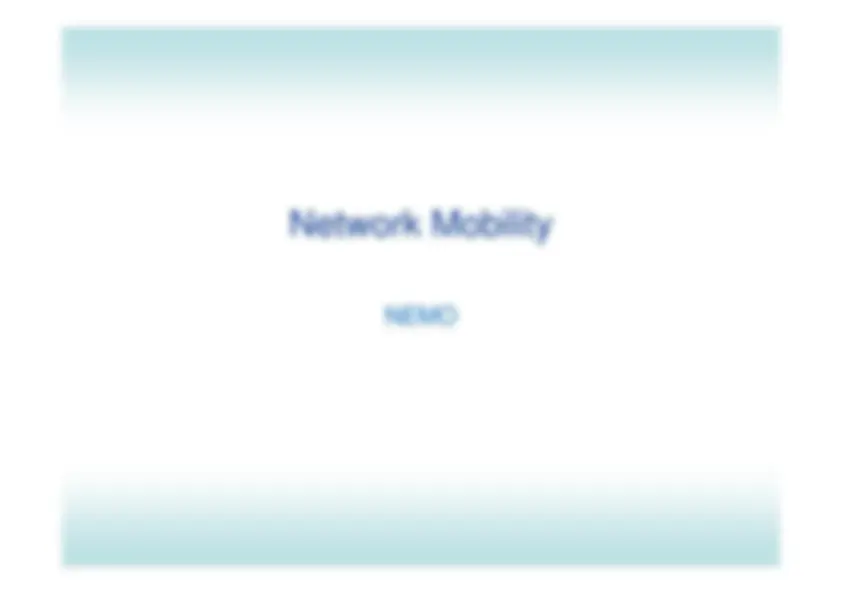
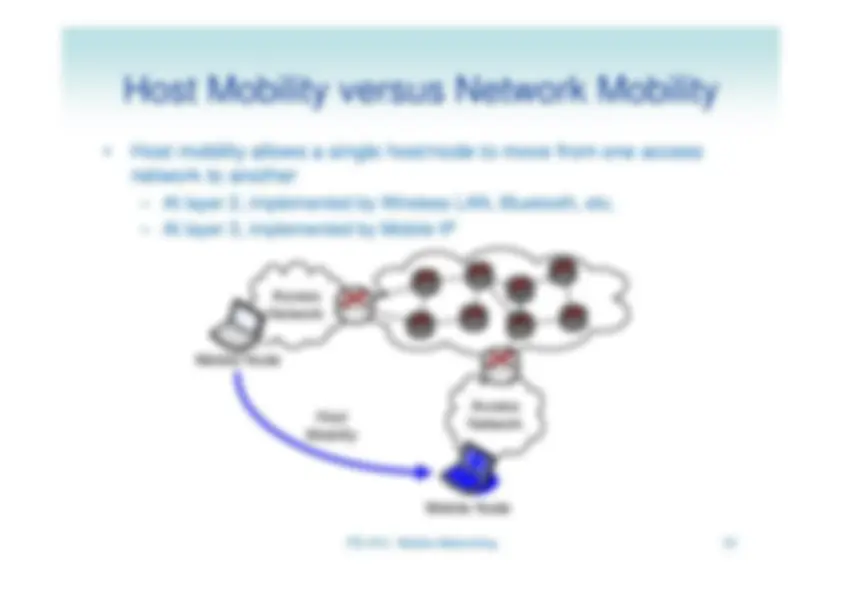
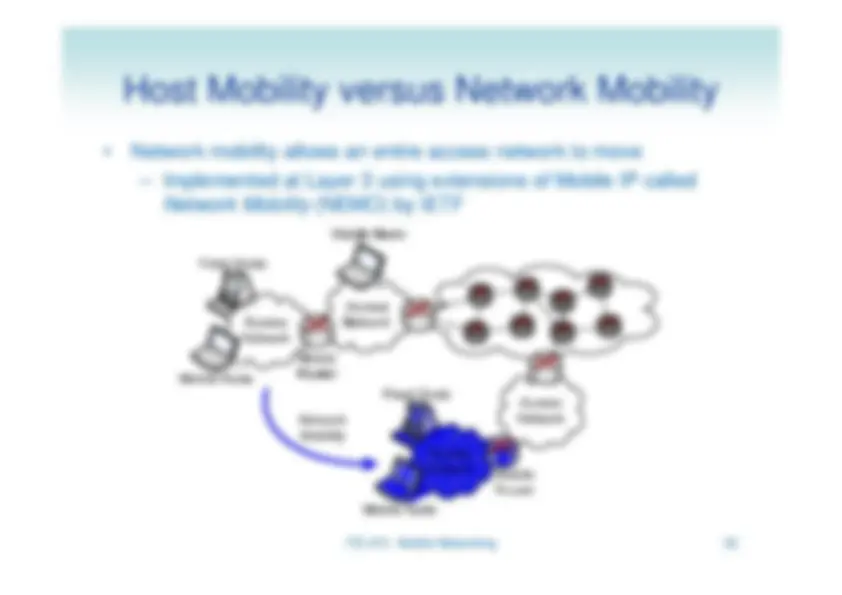
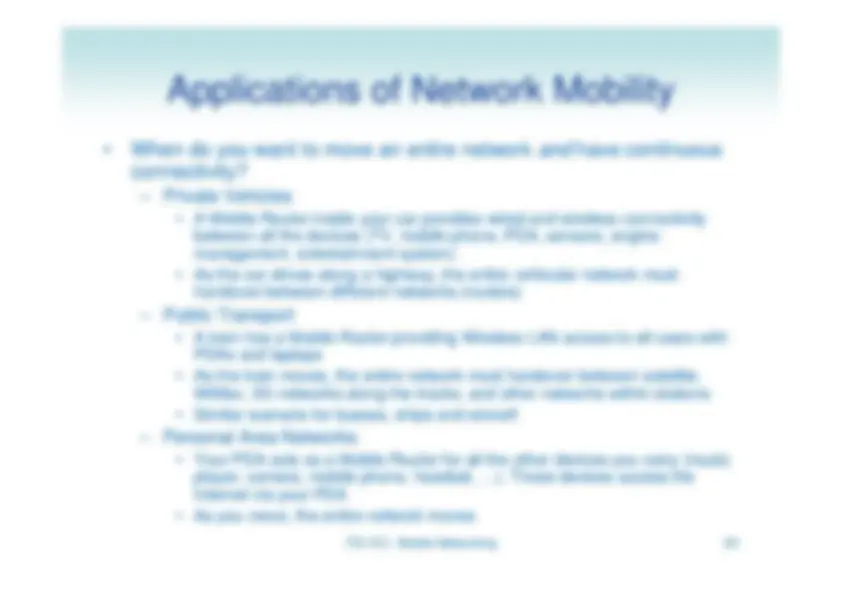
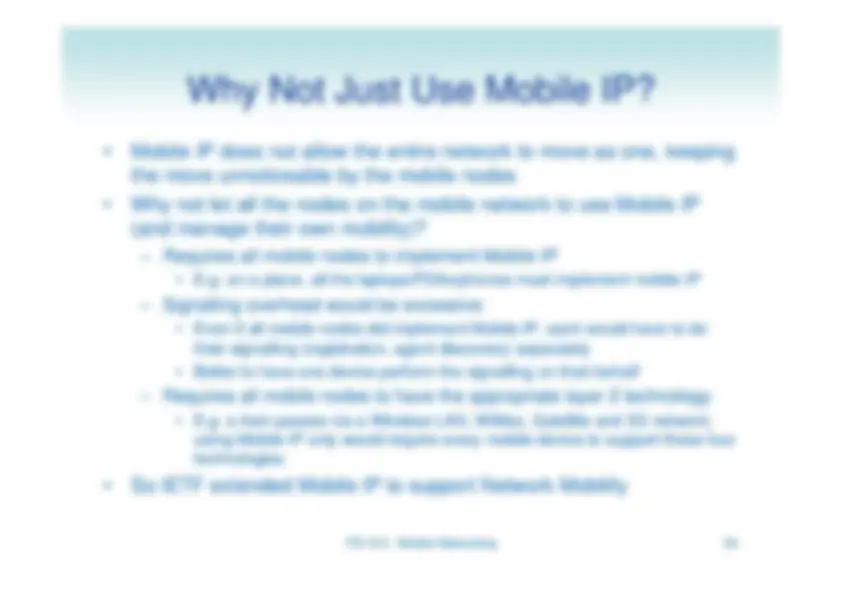
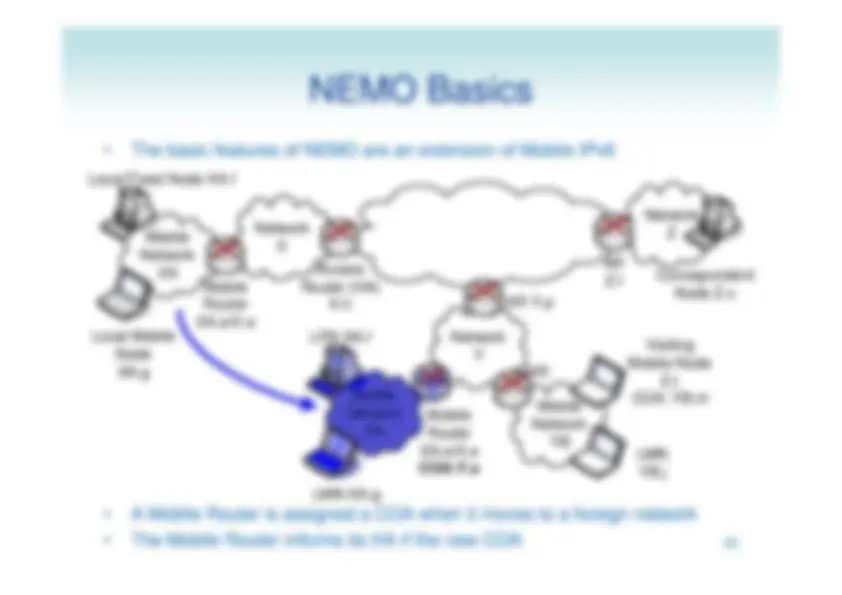
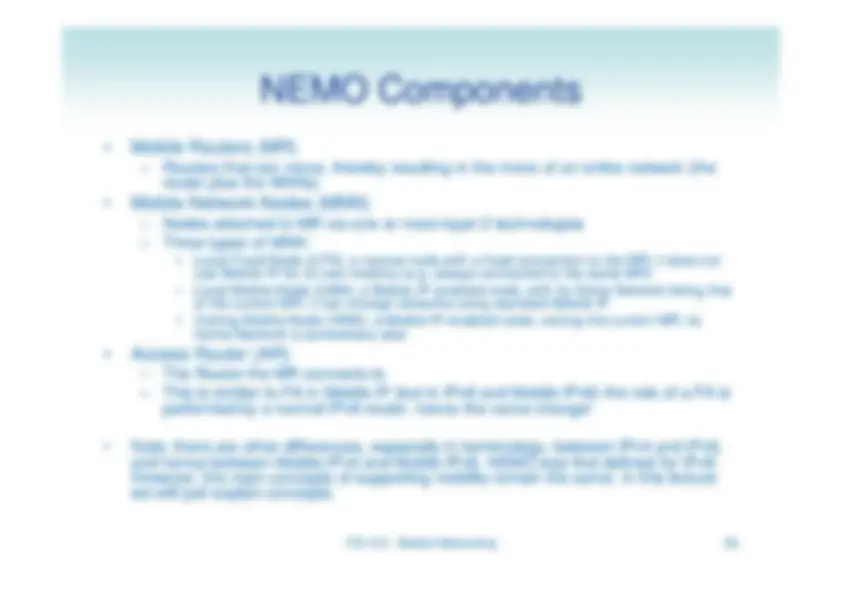
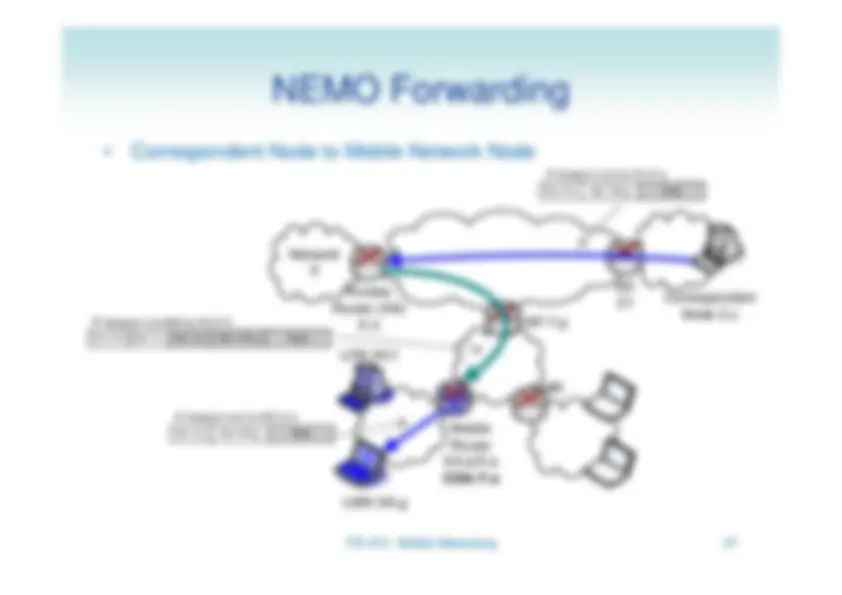
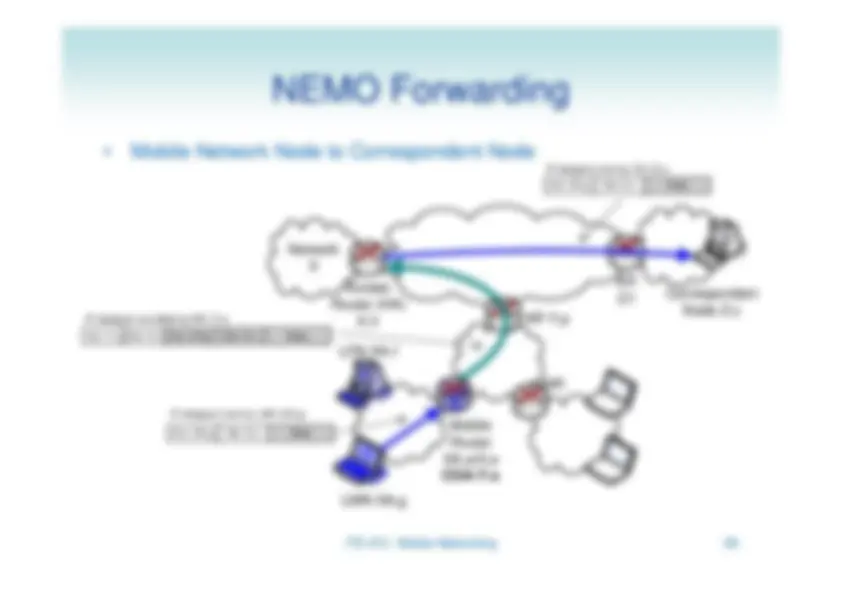

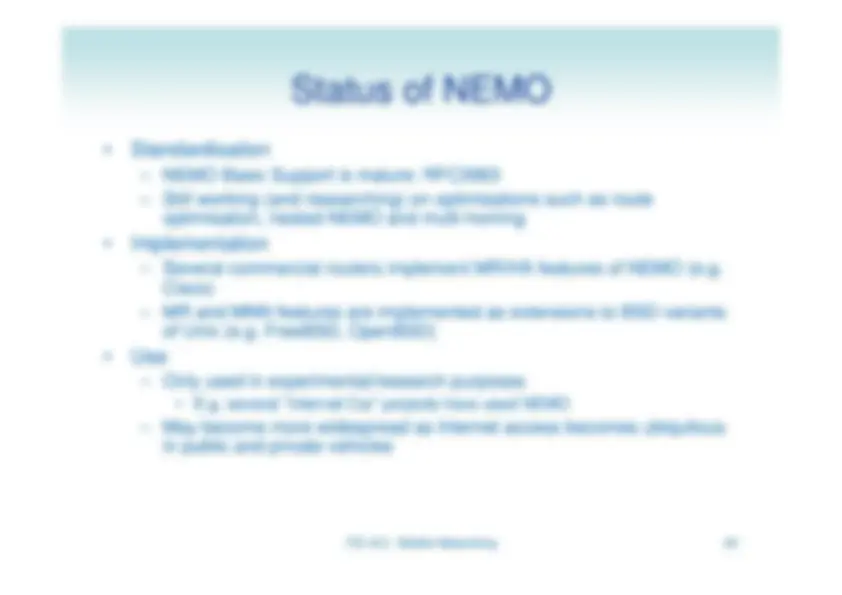

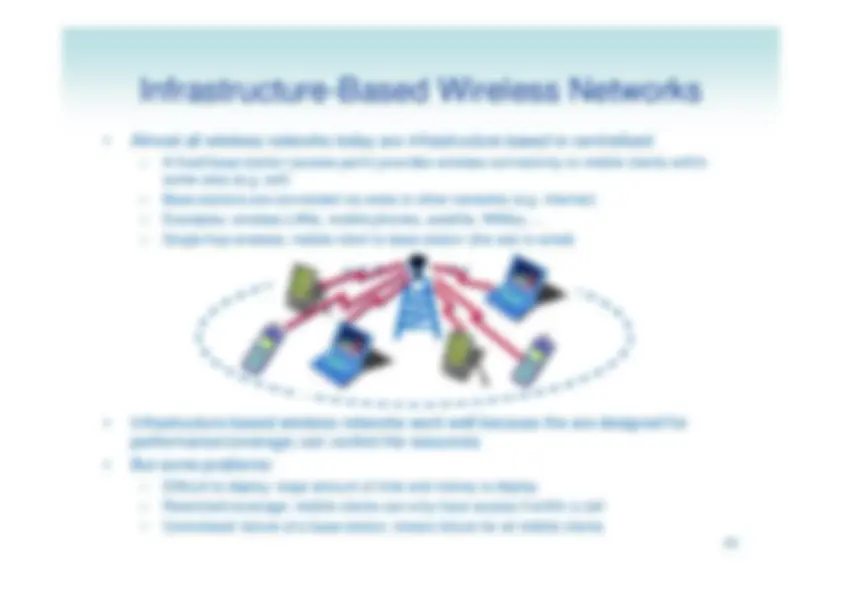
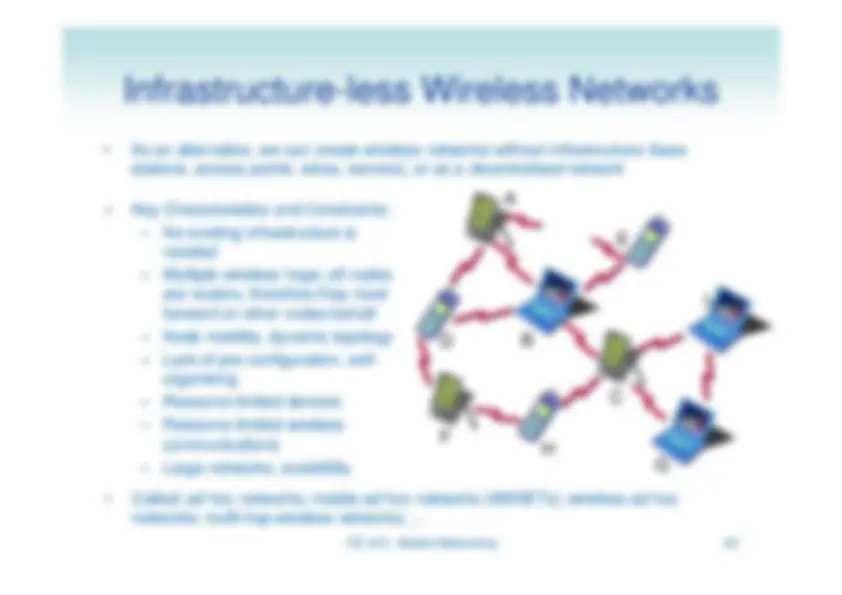
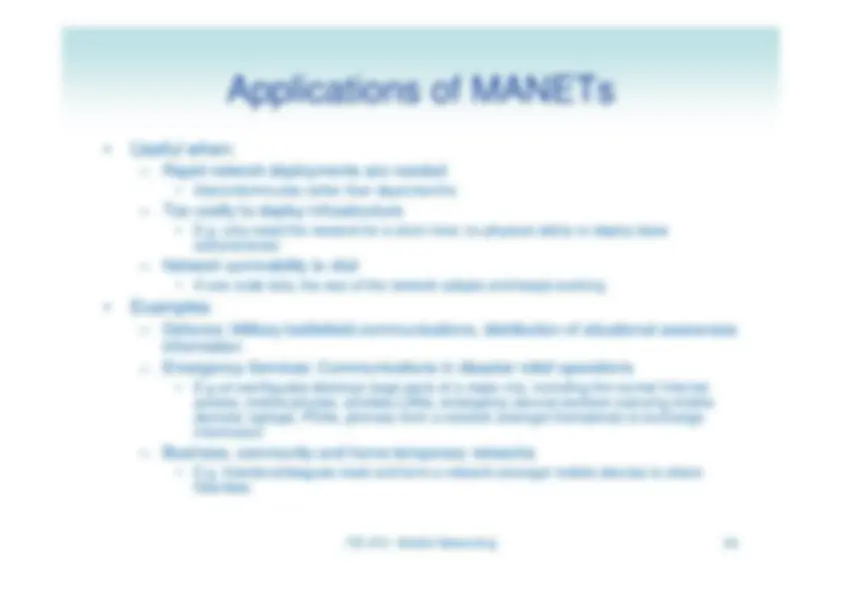
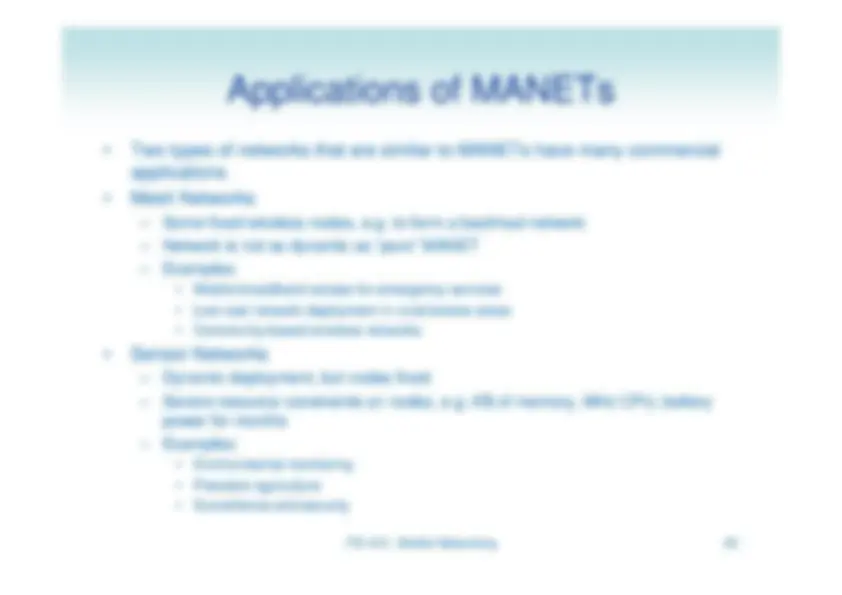

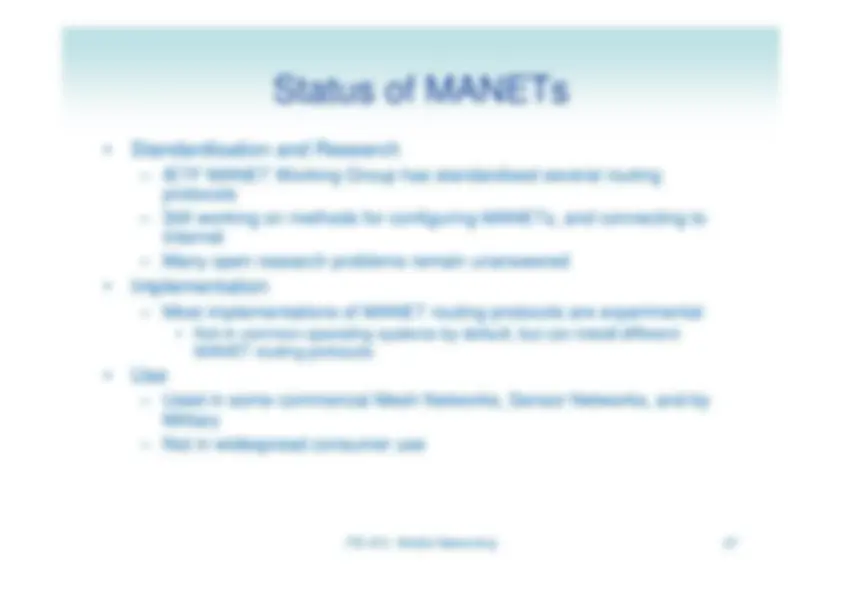


Study with the several resources on Docsity

Earn points by helping other students or get them with a premium plan


Prepare for your exams
Study with the several resources on Docsity

Earn points to download
Earn points by helping other students or get them with a premium plan
Community
Ask the community for help and clear up your study doubts
Discover the best universities in your country according to Docsity users
Free resources
Download our free guides on studying techniques, anxiety management strategies, and thesis advice from Docsity tutors
An in-depth look into Mobile IP, a protocol designed for enabling host mobility in mobile networking. Mobile IP allows mobile nodes to maintain their IP addresses while moving between different networks, ensuring seamless communication. the assumptions, components, issues, and solutions related to Mobile IP, including first registration, agent discovery, forwarding, tunneling, route optimization, and handover.
What you will learn
Typology: Lecture notes
1 / 47

This page cannot be seen from the preview
Don't miss anything!








































ITS 413 - Mobile Networking
ITS 413 - Mobile Networking
ITS 413 - Mobile Networking
ITS 413 - Mobile Networking
ITS 413 - Mobile Networking
Assumptions: Wireless Access Networks • Lets assume an “AccessNetwork” is a single IP networkwhere end-user hosts connect(via layer 2 technologies) to arouter–^ Hosts and router all use sameNetwork portion of IP address• Access Networks are connectedtogether via other IP networks(often called Core, Backbone orTransport networks)
X.a
RouterX.z X.b^ X.c^ X.d Access Network X AccessNetworkX
AccessNetworkY
AccessNetworkZ Internet
-^ E.g. when Z.a sends to X.b, Internet routing finds a path to Network X, then Router X.zuses direct delivery to send to X.b – Therefore, if a mobile host changes Access Networks, then must change IPaddress, otherwise routing will not work •^ E.g. when X.b moves to Network Y, it cannot use the same IP address X.b!
Internet X.a^ Router X.bX.z
RouterZ.z RouterY.z Y.f Y.e
Z.a
Hostmobility
?
ITS 413 - Mobile Networking
ITS 413 - Mobile Networking
-^ A Mobile Node is assigned a visiting, or Care-Of-Address, at the networks it visits^ –^ Application sessions still use to original Home IP address^ –^ Normal IP Routing forwards packets to the Home Network^ –^ Mobile IP then forwards packets from the Home Network to the Mobile Nodes currentForeign Network
Internet X.a^ Router X.bX.z^ HA
Router Router: Y.z FA Y.fY.e Z.z FA
Z.a
HomeIP: X.bCOA: Y.m Home Network (for X.b)
Foreign Network (for X.b)
Foreign Network (for X.b)
HomeIP: X.bCOA: Z.t
ITS 413 - Mobile Networking
-^ Home IP Address^ –^ The IP address assigned to the MN in its Home Network^ –^ The Home IP address is within the Home Network address range^ •
E.g. home network: 25.105.0.0/16; home address: 25.105.23.88/
-^ Care-of-Address (COA)^ –^ An IP address assigned to MN visiting a Foreign Network^ –^ The COA is an IP address within the Foreign Network address range^ •
ITS 413 - Mobile Networking
-^ Correspondent Node to Mobile Node^ –^ CN is not aware that MN is “mobile”^ –^ Sends packets to Home IP, e.g. X.b^ –^ HA intercepts and realises the MN isnot home, and forwards to ForeignNetwork where MN is visiting -^ Mobile Node to Correspondent Node^ –^ MN sends packets to CN (e.g. Z.a) viathe local FA^ –^ Source Address is MN’s Home IP (e.g.X.b) X.a^ RouterX.z^ HA
Router Router: Y.z FA Y.fY.e Z.z FA
Z.aCN
Home Network (for X.b)^ HomeIP: X.bCOA: Y.m
Foreign Network (for X.b)
Foreign Network (for X.b)
-^ First Registration (for example, Mobile Node powers on in a new ForeignNetwork)^ 1.^ MN discovers it is in a Foreign Network (see Agent Discovery)^ 2.^ MN sends a Mobile IP Registration Request to the FA^ –
Mobile Node^
Foreign Agent
Home Agent
ITS 413 - Mobile Networking
-^ How does a MN know the IP address of the FA?^ –^ When it first powers up?^ –^ When it performs a handover from an old FA to a new FA? •^ Three options for Agent Discovery:^ –^ IP Level Agent Advertisements^ •
Agent broadcasts periodic advertisements, indicating its own IP address • ICMP Router Advertisement messages, extended to carry Mobile IP information • Rate at which advertisements are sent must be limited (default: 1 per sec) • Agent^ may
be configured to only send advertisement after receiving solicitation
-^ IP Level Router Solicitation^ •^ MN broadcasts a solicitation message to the network^ •^ ICMP Router Solicitation messages are used^ •^ Rate MUST be limited (1 per second for the 3 initial solicitation messages, and thenwith exponential back-off)^ •^ The FA has to respond to solicitation with an advertisement message –^ Layer 2 Supported Techniques^ •^ Local broadcasts of L2 beacon frames with all necessary information (including FAaddress, supported functionality, CoA etc…)^ •^ MN can solicit beacon (or other L2 “welcome”) frames upon gaining L2 connectivity^ •^ Example: Wireless LAN beacons are extended to carry Mobile IP information, such asFA address